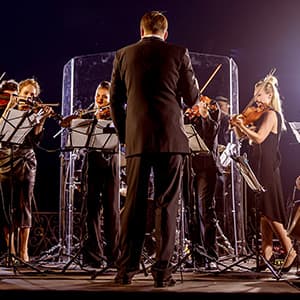

Beethoven Symphony No 5 Tickets
Up to 30% Off Compared to Competitors.
Location: Select Location (e.g, New York)
About Beethoven Symphony No. 5
Today, Beethoven's Symphony No. 5 is a staple in concert programs around the world, frequently performed by orchestras of all sizes, from grand symphony orchestras to small chamber ensembles. As of October 2023, numerous performances of this iconic symphony are scheduled across various venues, including prestigious concert halls like Carnegie Hall in New York and the Berlin Philharmonie. Many orchestras are also incorporating innovative multimedia elements into their performances, enhancing the audience's experience through visual storytelling. Additionally, there are themed concerts focusing on the symphony, pairing it with contemporary works that resonate with its themes of struggle and triumph. The symphony's enduring legacy is celebrated through various festivals and events, including the annual Beethovenfest in Bonn, which dedicates itself to showcasing Beethoven's works. As classical music continues to evolve, Symphony No. 5 remains a crucial part of the repertoire, captivating audiences with its emotional depth and historical significance.
Beethoven Symphony No. 5 History
Beethoven's Symphony No. 5, composed between 1804 and 1808, is one of the most recognizable pieces of music in Western classical tradition. Its opening motif, often described as 'fate knocking at the door,' has become emblematic of the struggle and triumph that characterize Beethoven's life and work. The symphony premiered in Vienna on December 22, 1808, during a concert that also featured his Symphony No. 6 and the Fourth Piano Concerto. The initial reception of the work was mixed, as audiences were still adjusting to Beethoven's innovative style and the emotional depth he infused into his compositions. Over time, however, Symphony No. 5 gained immense popularity, influencing generations of composers and musicians. Its themes of struggle, hope, and victory reflect Beethoven's own battles with deafness and personal adversity, making it a powerful symbol of resilience in the face of challenges.
